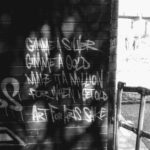It was great to read the recent post here on Manafonistas that referenced the inner goth in relation to Ocean Rain by Echo & The Bunnymen.
The idea of Echo & The Bunnymen being goth had never occurred to me before. I guess the French language, and French smoking influence got in the way.
I always imagined Echo & The Bunnymen lighting up Gauloises or Gitanes and digging Brel’s „La Valse à mille temps“ rather than reading Bram Stoker and sleeping in coffins. But it did kinda make sense. Look at The Royal Liver Building, its granite face. Liverpool’s most famous building – if it can be said to be representative of the city – isn’t exactly a splash of colour.
Anyway, the idea of the inner goth got me thinking about what is goth and what isn’t. And there’s no real answer to that, apart from the fact that Havergal Brian’s „Gothic Symphony“ is most definitely gothic. Inner goth though? That’s a subjective call. So here’s my Inner Goth Top Five. (Lifers, every one.)
Bauhaus – Third Uncle (Beggars Banquet, 1982). Eno’s original is post-punk, but it was recorded and released before punk, in 1974. That is an achievement, of course – and a big one. Bauhaus are wise enough not to try and alter the style of Third Uncle too much. They just put it back out there, and remove any sunlight from the original, replacing the sunlight with moonlight.
This Mortal Coil – Kangaroo (4AD, 1984). Another cover, this one is a rendition of Kanga Roo by Big Star. It’s the singing style that makes this, as well as the bass and the strings. The overall effect is of moonlight turning ramparts and flagstones silver-blue under a midnight sky.
The Cassandra Complex – Second Shot (Play It Again Sam, 1988). „All that glitters isn’t gold, but who cares, anyway? Let me bounce off your lens and into the trees.“ Goth with saxophones. A powerful and shattering listen.
The Royal Family & The Poor – Art on 45 (Factory Records, 1982). „Vast emptiness, nothing holy“. This song’s words echo the writings of Belgian philosopher Raoul Vaneigem, especially the 1967 book The Revolution of Everyday Life. With style.
John Maus – … And The Rain (Upset The Rhythm, 2011). „And the rain came down, down down down down down.“










